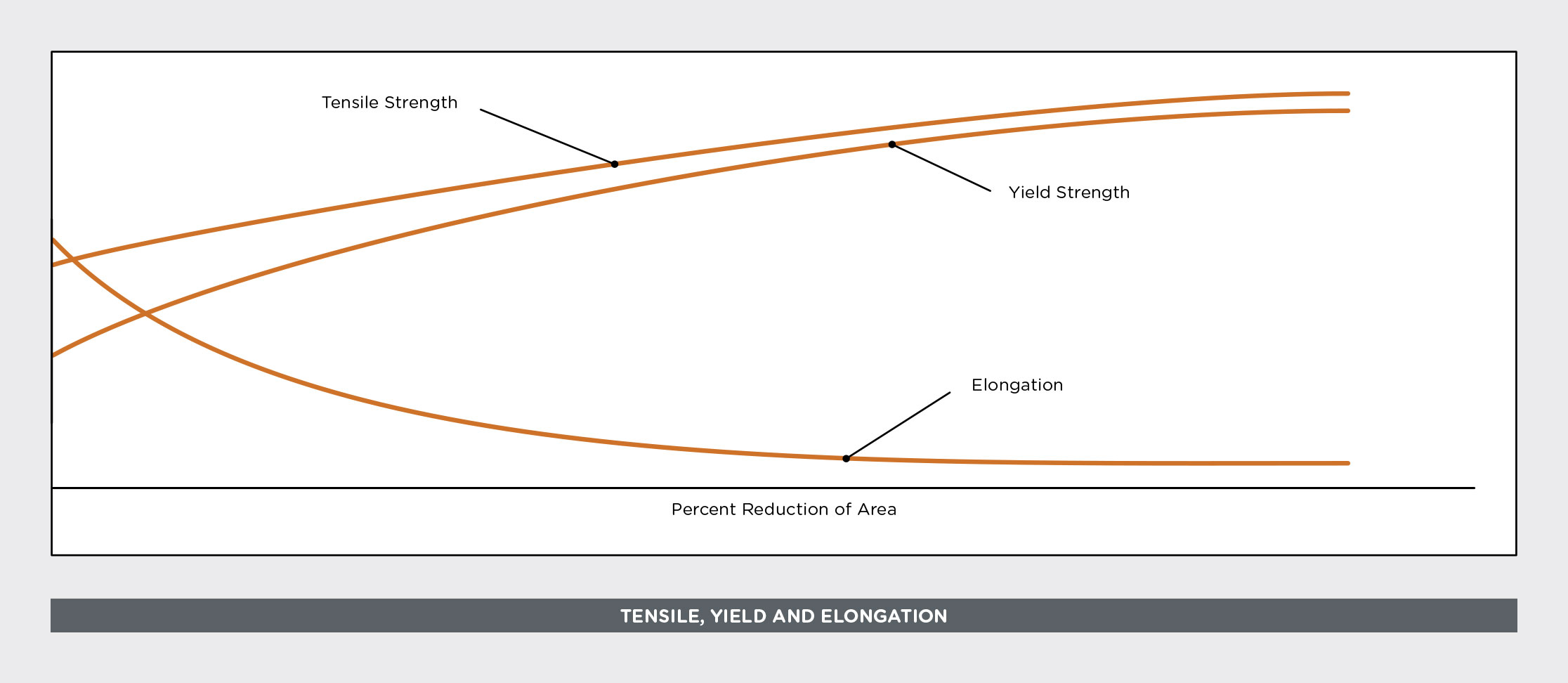Tensile tests are conducted to determine tensile strength, yield strength and elongation of a material. These properties depend on the alloy and temper as well as shape of the material being tested. ASTM E 8 specifies tensile testing procedures for metallic materials.
Definitions
Tensile Strength:
The maximum stress the material will sustain before fracture. The tensile strength is calculated by dividing the maximum load by the original cross-sectional area of the test specimen.
Yield Strength:
The stress corresponding to a specified permanent (plastic) deformation. The specified permanent deformation has been standardized in the non-ferrous industry as 0.2% offset on the stress-strain curve.
Elongation:
The increase in the gauge length, measured after fracture of the specimen within the gauge length, usually expressed as a percentage of the original gauge length.
Strip material is typically tested using a prepared standardized sample with a gauge length of 2 inches by 1/2 inch width. Tensile testing for wire uses the actual finish wire size as produced. Elongation in wire can be measured and is reported over many different gauge lengths (2 to 60 inches) although the most common ones are 2 and 10 inches (50mm-250mm). Since elongation depends on the testing gauge length, when reporting elongation, the gauge length must also be reported (the longer the gauge length, the lower the measured elongation).
When an alloy is cold worked by rolling or drawing, tensile and yield strengths increase while elongation decreases, as schematically illustrated. As strength increases from the cold work, the difference between yield and tensile strength decreases and quickly reaches a small and relatively constant value. This allows one measure of strength, tensile strength, to represent the other temper properties.
The measurement of tensile strength in wire is definitive, does not require any extra preparation of the wire sample, interpretations and manipulations of the test results, and correlates readily between different test centers. Tensile strength is the mechanical property that wire is specified and produced to.

It is to be noted that the greater cross sectional area reduction realized in wire processing narrows the spread between tensile and yield strength. Tensile strength then becomes the primary specification parameter in wire with yield and elongation used as reference values.
